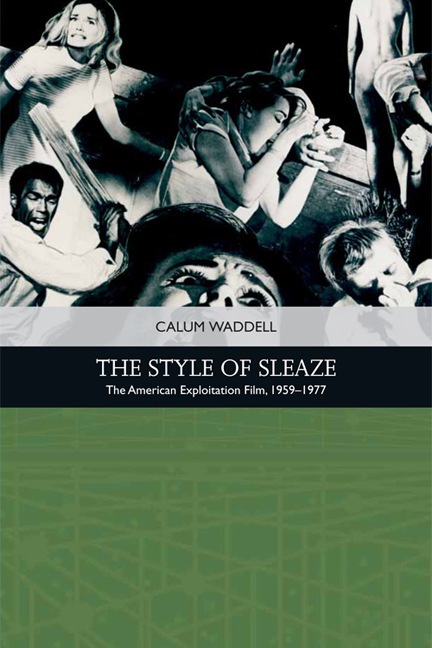Book contents
- Frontmatter
- Contents
- List of Figures
- Acknowledgements
- Introduction
- 1 Not Quite Hollywood
- 2 Emerging from Another Era – Narrative and Style in Modern Exploitation Cinema
- 3 Can We Call It Sexploitation?
- 4 Sex Morality Plays: Character in Adult Cinema
- 5 The Body is Everything: Sexploitation Spectacle
- 6 Exploitation-Horror Cinema
- 7 Cannibalising Tradition: Romero’s Zombies and a Blood Feast
- 8 Slash and Burn: The Exploitation-Horror Film in Transition
- 9 Blaxploitation Cinema: Race and Rebellion
- 10 Sex, Violence and Urban Escape: Blaxploitation Tropes and Tales
- 11 The Blaxploitation Female
- 12 Exploitation as a Movement
- Select Bibliography
- Index
12 - Exploitation as a Movement
Published online by Cambridge University Press: 11 November 2020
- Frontmatter
- Contents
- List of Figures
- Acknowledgements
- Introduction
- 1 Not Quite Hollywood
- 2 Emerging from Another Era – Narrative and Style in Modern Exploitation Cinema
- 3 Can We Call It Sexploitation?
- 4 Sex Morality Plays: Character in Adult Cinema
- 5 The Body is Everything: Sexploitation Spectacle
- 6 Exploitation-Horror Cinema
- 7 Cannibalising Tradition: Romero’s Zombies and a Blood Feast
- 8 Slash and Burn: The Exploitation-Horror Film in Transition
- 9 Blaxploitation Cinema: Race and Rebellion
- 10 Sex, Violence and Urban Escape: Blaxploitation Tropes and Tales
- 11 The Blaxploitation Female
- 12 Exploitation as a Movement
- Select Bibliography
- Index
Summary
As detailed in my introduction, in 2007 American director Quentin Tarantino teamed up with Mexican filmmaker Robert Rodriguez for a major Hollywood production entitled Grindhouse (2007). The film cost in the region of $53 million to produce and ran for more than three hours. Grindhouse exhibited two movies in the style of old double-bill programming: Rodriguez's Planet Terror, a throwback to the horror of Night of the Living Dead and the zombie genre that it inspired (including, in particular, the Italian splatter epic Nightmare City (Umberto Lenzi, 1980)), and Tarantino's Death Proof, a psycho-sexual ‘mad maniac’ movie about a serial killer who drives an ominous black Dodge Charger car. As two of America's most famous directors, Rodriguez and Tarantino probably introduced the term ‘grindhouse’ to a new generation but their multi-million-dollar homage was in the style of a major Hollywood blockbuster and bore little similarity to the films it drew inspiration from. In Planet Terror and Death Proof the minimal locations, unknown actors, genuine surroundings and prolonged, raw documentary-style depictions of agony and horror (detailed in close-up and real-time) that typify films such as Night of the Living Dead, The Last House on the Left and Martin were replaced by special-effects extravagance, lavish production values and A-list performers such as Bruce Willis and Kurt Russell. Nudity, meanwhile, was teased at but not exhibited, and ethnic portrayals were wisely shorn of any stereotypes from exploitation past. Yet, in avoiding such tropes, Grindhouse could never really be a love-letter to ‘exploitation’. Indeed, such a thing in today's world would simply not suffice.
Nonetheless, the popular awareness of Grindhouse – even if the box office was less than thrilling – resulted in the term ‘exploitation’ being discussed in the mainstream press, albeit in the same vague terms of Sconce's discussion of paracinema. Referencing the Rodriguez/Tarantino double bill, Atkinson acknowledges ‘the grindhouse “tradition” of exploitation filmmaking’ but struggles to clarify what he means by this statement: ‘a semi-forgotten desert paradise of raw cinematic experience … a newly identified meta-subgenre, a remembered confluence of essentially unrelated phenomena defined by the circumstances in which they were originally viewed’.
- Type
- Chapter
- Information
- The Style of SleazeThe American Exploitation Film, 1959–</I>1977, pp. 185 - 195Publisher: Edinburgh University PressPrint publication year: 2018



